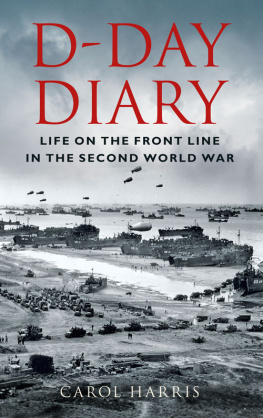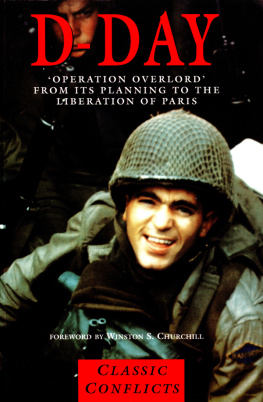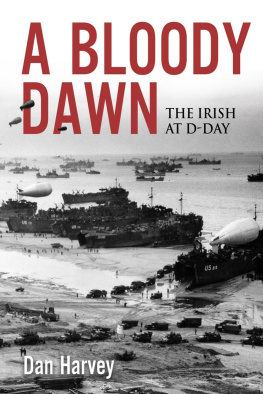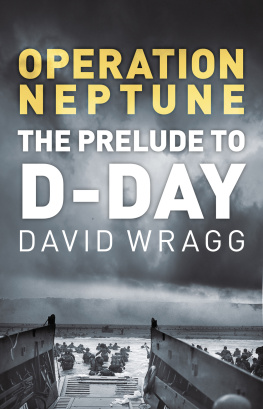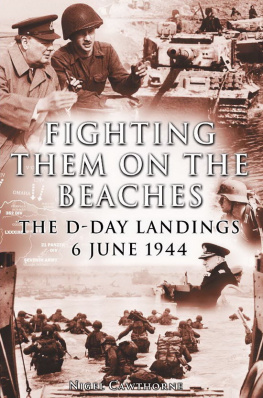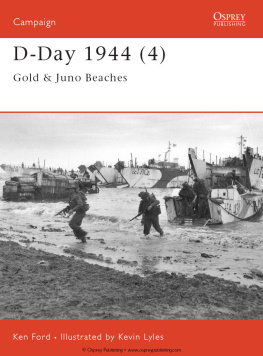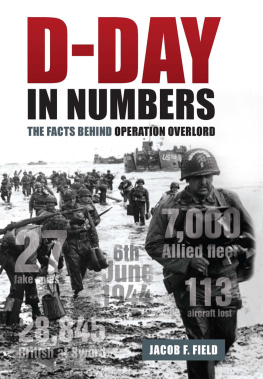
The Allied landings in Normandy on D-Day, 6 June 1944 marked the beginning of the end of the Second World War. This short book tells the story of the event through the accounts of eyewitnesses.
Today, the D-Day invasion is viewed as not only the biggest but also the most successful invasion ever launched. These contemporary accounts show that at the time, such an outcome seemed far from certain.
As far as I have been able to ascertain, all of those whose accounts make up this book survived the war, although few, sadly, are alive today.
I would like to thank the following people who gave me permission to quote from their own or their relatives accounts: Sheila Austin, Barbara Beal, the family of Maureen Bolster, W. Cutler, Annette Conway (for extracts from the papers of Rev. Leslie Skinner), A.M. Kerr (for the account by Captain Maurice Jupp), and Patricia Wildman. Also, to Olivia Beattie at Biteback Publishing, and to the following for permission to quote from online sources: Patrick Elie of the 6Juin website, Mark Hickman of the Pegasus Archive, Lew Johnston from the Air Mobility Command Museum, H. Kalliomaki at Veterans Affairs Canada, the Black Hills Veterans Writing Group, Andrew Whitmarsh of the D-Day Museum in Portsmouth, and Paul Zigo and Donna Bastedo of Center for World War II Studies and Conflict Resolution.
I am especially grateful to the following, without whom this book could not have been written: William and Ralph for their administrative support; Mike Brown for his expert advice; Sophie Bradshaw and Lindsey Smith of The History Press for keeping the project on track, and staff at the Imperial War Museum Research Room, especially Simon Offord, Documents and Sound Archivist.
Contents
AA | Anti-aircraft |
ack-ack | Anti-aircraft guns ( ) |
ADS | Advanced Dressing Station |
APM | Assistant Provost Marshal |
ARK | Armoured Ramp Carrier |
ARV | Armoured Reconnaissance Vehicle |
ASR | Air Sea Rescue |
AVRE | Armoured Vehicle, Royal Engineers |
BM | Beachmaster |
Brig. Gen. | Brigadier General |
Capt. | Captain |
CIGS | Chief of the Imperial General Staff |
CO | Commanding Officer |
Col | Colonel |
DD tanks | Duplex Drive tanks |
DUKW | Six-wheeled amphibious vehicle |
DZ | Drop Zone |
EME | Electrical and Mechanical Engineers |
ENSA | Entertainments National Service Association |
FANY | First Aid Nursing Yeomanry |
Fd Sqn | Field Squadron |
FM | Field Marshal |
FUSAG | First United States Army Group |
FW | Focke-Wulf |
Gen. | General |
Grp Capt. | Group Captain |
GT | General Transport |
HAA | Heavy Anti-Aircraft |
HE | High Explosive |
IC | In charge (of) |
IO | Intelligence Officer |
LAA | Light Anti-Aircraft |
LCA | Landing Craft, Assault |
LCI (L) | Landing Craft, Infantry (Large) |
LCM | Landing Craft, Mechanised |
LCP | Landing Craft, Personnel |
L/Cpl | Lance Corporal |
LCR | Landing Craft Rocket |
LCT | Landing Craft, Tank |
LCT(R) | Landing Craft, Tank (Rocket) |
LCVP | Landing Craft Vehicle, Personnel |
L/Sgt | Lance Sergeant |
L/Sgt | Lance Sergeant |
LST | Landing Ship Tank |
Lt Col | Lieutenant Colonel |
Lt | Lieutenant |
Maj. Gen. | Major General |
Maj. | Major |
m/c | Motorcycle |
Me | Messerscmitt |
MG | Machine Gun |
MI5 | British intelligence agency |
ML | Motor Launch |
MO | Medical Officer |
NAAFI | Navy, Army and Air Force Institutes |
NCO | Non-Commissioned Officer |
OC | Officer Commanding |
PIAT | Projector, Infantry, Anti-Tank |
PO | Pilot Officer |
RAF | Royal Air Force |
RA | Royal Artillery |
RASC | Royal Army Service Corps |
REME | Royal Electrical and Mechanical Engineers |
RE | Royal Engineers |
Rev | Reverend |
RM | Royal Marines |
RN | Royal Navy |
RNVR | Royal Naval Volunteer Reserve |
R/T | Radio Telegraph |
RV | Rendezvous |
SBG | Small Box Girder |
Sgt | Sergeant |
SHAEF | Supreme Headquarters Allied |
Expeditionary Force |
Spr | Sapper |
SP | Self-propelled |
Sqn Ldr | Squadron Leader |
TCG | Troop Carrier Group |
TCS | Troop Carrier Squadron |
Tp | Troop |
TSM | Temporary Sergeant Major |
Wg Cdr | Wing Commander |
W/Ops | Wireless Operators |
WRNS | Womens Royal Naval Service |
W/T | Secret messages transmitted by Morse Code |
1
The early years of the Second World War were marked by the rapid advance of Germany and Japan as they swept through Europe and the Pacific regions. By the end of 1940, most of Western Europe was under Nazi rule and Britain stood alone. Japan, Germany and Italy had signed the Tripartite Pact, establishing them as the Axis Powers and guaranteeing mutual support if any one of them were to be attacked by any country other than the Soviet Union.
It became increasingly obvious, as the years passed, that an invasion of mainland Europe by the Allies would be necessary to secure victory and end the war. American involvement was essential: without their resources equipment and soldiers Britain could only hope to stay in less-than-splendid isolation, cut off from Europe. There, its closest neighbours France, the Netherlands and Belgium were under Nazi control, and others such as Switzerland, Portugal and Spain remained neutral.
Next page
